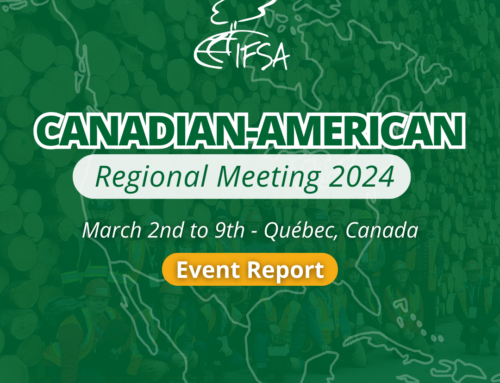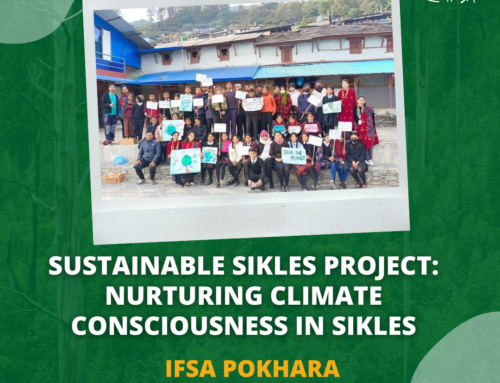 By Max Behringer
Wetlands are tremendously important ecosystems that occur throughout all climate zones. They are hotspots of biodiversity and home to highly adapted organism like mangrove trees and carnivorous plants. Wetlands include ecosystems like mangroves, peatlands, deltas, floodplains etc.. To maintain these ecosystems water flows need to be managed sustainable to avoid widespread ecosystem collapse. Climate change will put further pressure on these ecosystems especially in areas with wetland-dryland interactions.
In her presentation Jane Madgwick from Wetlands international focused on wetlands in the Sahel, which are seasonally flooded and highly productive ecosystems. Tens of million of people are depend on these ecosystems with direct outputs like fish, rice, cattle farming and indirectly also pastoralists who find refuge during dry seasons. As already small shifts in the water level can get the system of balance it is important to understand the dynamics of water and the interaction of people and ecosystems. This is why economic development projects like irrigated agriculture can lead to manmade water scarcity and cause a decline and degradation of wetlands. People whose livelihoods depend on wetland resources are forced to migrate and conflicts on the limited recourses rise. Jane Mdgwick pointed out that “we need to get rid of the idea to balance environment and development. Wetlands are the engine of the local economy”. Wetlands can regulate and store water and thereby play a vital role in climate change adaptation. A sustainable management can maintain and increase social and ecological resilience. In this context up to now most strategies are largely focused on grey infrastructure (like dams). Despite the huge potential of nature-based solutions, they currently attract less than 1% of total investments into water resource management.
Greenhouse gas emissions from drained or burned peatlands account for up to 5% of the global carbon budget and wetlands are the most rapidly declining ecosystems in the world. Therefore, we need to act now to ensure that future generations can use the ecosystem services of resilient wetlands that provide livelihoods and resources to local and regional communities. In yesterday´s Talanoa Dialogue (you can find more information about Talanoa in Lisa´s blogpost “Talanoa – Let´s Talk!”) Wetland international also highlighted the importance of enhancing ambitions on water and wetlands under the Paris Agreement through long-term strategies like NDCs (Nationally Determined Contributions) to set policies and targets and create cross-sectoral collaboration.
Source of picture: https://www.wetlands.org/wp-content/uploads/2016/01/Water-for-life-e1468857952511-1919×500.jpg
]]>
By Max Behringer
Wetlands are tremendously important ecosystems that occur throughout all climate zones. They are hotspots of biodiversity and home to highly adapted organism like mangrove trees and carnivorous plants. Wetlands include ecosystems like mangroves, peatlands, deltas, floodplains etc.. To maintain these ecosystems water flows need to be managed sustainable to avoid widespread ecosystem collapse. Climate change will put further pressure on these ecosystems especially in areas with wetland-dryland interactions.
In her presentation Jane Madgwick from Wetlands international focused on wetlands in the Sahel, which are seasonally flooded and highly productive ecosystems. Tens of million of people are depend on these ecosystems with direct outputs like fish, rice, cattle farming and indirectly also pastoralists who find refuge during dry seasons. As already small shifts in the water level can get the system of balance it is important to understand the dynamics of water and the interaction of people and ecosystems. This is why economic development projects like irrigated agriculture can lead to manmade water scarcity and cause a decline and degradation of wetlands. People whose livelihoods depend on wetland resources are forced to migrate and conflicts on the limited recourses rise. Jane Mdgwick pointed out that “we need to get rid of the idea to balance environment and development. Wetlands are the engine of the local economy”. Wetlands can regulate and store water and thereby play a vital role in climate change adaptation. A sustainable management can maintain and increase social and ecological resilience. In this context up to now most strategies are largely focused on grey infrastructure (like dams). Despite the huge potential of nature-based solutions, they currently attract less than 1% of total investments into water resource management.
Greenhouse gas emissions from drained or burned peatlands account for up to 5% of the global carbon budget and wetlands are the most rapidly declining ecosystems in the world. Therefore, we need to act now to ensure that future generations can use the ecosystem services of resilient wetlands that provide livelihoods and resources to local and regional communities. In yesterday´s Talanoa Dialogue (you can find more information about Talanoa in Lisa´s blogpost “Talanoa – Let´s Talk!”) Wetland international also highlighted the importance of enhancing ambitions on water and wetlands under the Paris Agreement through long-term strategies like NDCs (Nationally Determined Contributions) to set policies and targets and create cross-sectoral collaboration.
Source of picture: https://www.wetlands.org/wp-content/uploads/2016/01/Water-for-life-e1468857952511-1919×500.jpg
]]>




